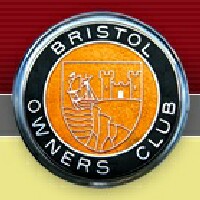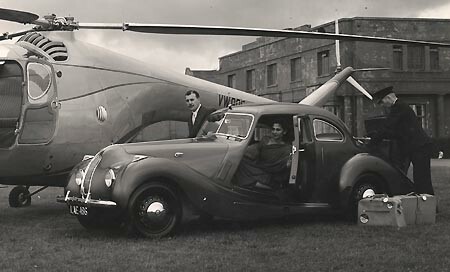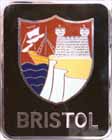The secret world of Bristol Cars
Just seventy years after the founding of Bristol Cars, the world’s first specialist sales outlet for pre-owned models is open for business
TONY MIDDLEHURST/SLJ HACKETT
Tuesday 24 January 2017
Bristol is a remarkable company. It has a seven-decade heritage of
hand-built luxury, performance, aviation aerodynamics and fine
craftsmanship. Its cars – typically four-seat coupés, occasionally
convertibles, but always fast and graceful – are laden with character,
rarity, and investability.
Stories and legends drift through Bristol’s history like early morning
mist drifting across a grouse moor. Much of this folklorish quality
has arisen as a result of the historically stand-offish PR approach
taken by Bristol Cars’ founders.
Although the mutual distrust and antipathy between Bristol and the
press has sometimes backfired to the car maker’s disadvantage, the
overall effect has been to build on the brand’s intriguing aura of
mystique, and thereby cement the relationship between the company and
its loyal band of followers.
A new Bristol, the open-top Bullet, has just been launched. The bad
news is that it costs £250,000. The good news is that, for less than a
tenth of that amount, you can own a classic Bristol.
First, though, you’ve got to find one for sale. Some kind of retail
network would be normal for a manufacturer that’s been in business for
70 years, but in the quasi-mystical world of Bristol cars, the word
‘normal’ simply doesn’t apply. So far, there has been no physical
sales point where customers might choose from a selection of vehicles.
As private vendors often shun advertising, tracking down a biddable
Bristol can be a sleuthing exercise demanding plenty of patience and a
painstaking ability to piece together clues and leads.
Now, in Bristol’s 70th anniversary year, SLJ Hackett – the world’s
first and only specialist in pre-owned Bristol sales – is opening its
doors. The secret world of Bristol will also be opening up – and
that’s a fascinating prospect.
Who are SLJ Hackett?
The initials in the company name stand for Spencer Lane-Jones, a Royal
Engineers colonel who, after leaving the Army in the late 1980s, set
up a quality car restoration service in the Wiltshire barracks town of
Warminster.
Back then, British thoroughbreds from the likes of Aston Martin and AC
rubbed shoulders with Bristols in SL-J Ltd’s restoration workshop
space, but in more recent times the company’s hard-earned global
reputation for top quality Bristol work has effectively shifted its
focus onto the preservation of these highly distinctive grand tourers.
SL-J’s Bristol restoration operation will run alongside its new
pre-owned Bristol SLJ Hackett sales function in recently acquired
premises on the outskirts of Warminster. Lane-Jones’s engineering
knowledge remains on tap to customers in his capacity of technical
consultant.
Who might buy a Bristol?
Bristol
owners have typically been characterised as an unostentatious and
quirky coterie of moneyed eccentrics, country gentlefolk and
non-establishment figures linked only by their shared determination to
plough a unique furrow in life.
Those old-world stereotypes undoubtedly still exist, but today’s
Bristol owner is just as likely to be a tech leader, venture
capitalist, rock musician or internet startup guru.
The infinite rebuildability of these high-class expresses advances the
concept of car ownership to a new one of car stewardship. Reverse
depreciation invests them with an enduring appeal that will resonate
as strongly with sharp investors and Shoreditch hipsters as it always
has with the old money set.
Bristol useability
When Bristol Cars opened for business in 1946 as an offshoot of the
Bristol Aeroplane Company, product design was strongly driven by the
parent company’s background in aviation. Aerodynamic body shapes
allied to overdrive gearboxes maximized the potential of the
relatively small-capacity but jewel-like Bristol engines, making the
cars an excellent choice for high-speed Continental exploration.
Later, the adoption of hulking Chrysler V8 engines changed the
character, size and shape of Bristol’s creations. Both power and
mechanical manageability were boosted, and the deep pool of American
V8 parts and knowledge built up over the years means that a 1966
Bristol 409 will be much easier to run and maintain in 2017 than it
would have been when it was new.
Which brings us to the key advantage of restored Bristols: they can be
updated. The relentless march of progress in tyres, fuels and oils has
already lifted them up to a higher dynamic level and greatly improved
fuel consumption. Replacing other everyday components with modern
equivalents lifts them onto another plane altogether.
Handling takes a leap forward if you replace the innards of the older
cars’ complex suspension units with Koni-style adjustable shock
absorber parts, and add anti-roll bars and polyurethane bushes. Drum
brakes can be upgraded with modern and much more effective pad
materials or replaced by discs. Ignition, lighting, driveline, oil
cooling and filtration systems can all be easily brought up to 21st
century specifications, adding value, reliability and
user-friendliness.
This sympathetic incorporation of modern mechanical technologies
strikes a chord among those who distrust the electronic handling
systems that festoon (and ultimately bring down) more modern cars.
Effectively, you end up with an original classic that runs as well as
a modern one – and it can all be done ‘on the quiet’. Both old and
new-world Bristol owners enjoy the in-joke of quietly combining the
old-school look with cutting-edge technology. Fuel injection systems
are disguised as carburettors; modern alternators sit inside dynamo
cases; digital radios hide behind post-war fascias; and superchargers
lurk unseen in the engine bay.
Bristol investability
Prices of ‘obvious’ classic cars from big-name manufacturers such as
Ferrari, Aston Martin and Porsche have already climbed to hedge-fund
levels.
Finding the next sure-fire investment target has turned into a
forensic exercise for market watchers. The Bristol is yet to come
under the speculator’s microscope, but forces now at play – not least
the creation of the highly credible SL-J Hackett Sales outlet – are
giving a strong hint to investors about Bristol prospects.
The marque passes every test of investability. The heritage is strong,
the products are hand-built and expertly restored, and stocks are
extremely limited. Although an accurate figure on the total number of
Bristols built in the 70 years since 1946 is impossible to find, it’s
generally believed to be less than 3,000. In 2013 alone, nearly 30,000
Porsche 911s were built.
The key question of restoration costs also operates in Bristol’s
favour. For sellers of restored classics, the price tag must at least
cover not only the original purchase price of the car, but also of its
rebuild – usually a considerably larger sum. The combined cost of ‘car
plus work’ means that examples of even relatively common classics like
Jaguar’s E-Type end up having to be advertised at unrealistic prices
that reflect an owner’s outlay rather than the car’s true market
value.
Restorable Bristols stand apart from many of the big-name classics in
that they are currently still affordable. ‘Buying the best you can
afford’ should always be the motto for anyone thinking of dabbling in
classic cars, as labour will always be the biggest cost element in any
restoration.
The beauty of a Bristol is that a scruffy but basically sound example
with an MOT certificate might be picked up for less than £20,000 and
then transformed by SL-J into something worth four or five times that,
leaving comfortable financial headroom in the deal for the owner.
Bristol: myths and reality
• The new £250,000 Bristol Bullet combines a high-tech bonded
aluminium chassis with carbonfibre composite bodywork.
Older Bristols made use of aluminium too, but only in the exquisitely
hand-beaten curves of the bodywork. The chassis to which their bodies
were attached was conceived in an age before airbags. The safety
philosophy was to create a massive steel structure that would cocoon
the occupants within its width. That simple theory has been borne out
in practice. SL-J’s Colin Hubert tells the story of a Bristol famously
coming into hard contact with an articulated lorry. The lorry
sustained significant damage; the Bristol emerged relatively
unscathed.
• Nowadays, even superminis easily achieve three-figure speeds, but
things were different in the 1950s. A 100mph car was special. SLJ
Hackett partner Richard Hackett recalls a mid-1950s trip to the south
of France in the family Bristol during which his mother was lulled
into a false perception of time by the effortless cruising ability of
her husband’s streamlined coupé.
“We were on the Autoroute du Soleil,” he smiles, “and my mother was
expressing some concern at the possibility of us arriving late at our
destination.
“When I looked at the speedo I realised she had nothing to worry
about. We were doing 5000rpm in overdrive top.” Few cars would have
been travelling faster than the Hackett Bristol on that particular
road at that particular time.
Curate
a Bristol as you might look after a piece of fine furniture and
your reward will be deep satisfaction, both during ownership and
when the time comes to sell it on – assuming that such a time ever
arrives. Bristol owners tend to hang onto their cars. One journey
in a Bristol cabin – the automotive version of a Cambridge don’s
study – is usually all it takes to understand why.

A Great Club: The Bristol Owners' Club

Bristol car and matching helicopter
